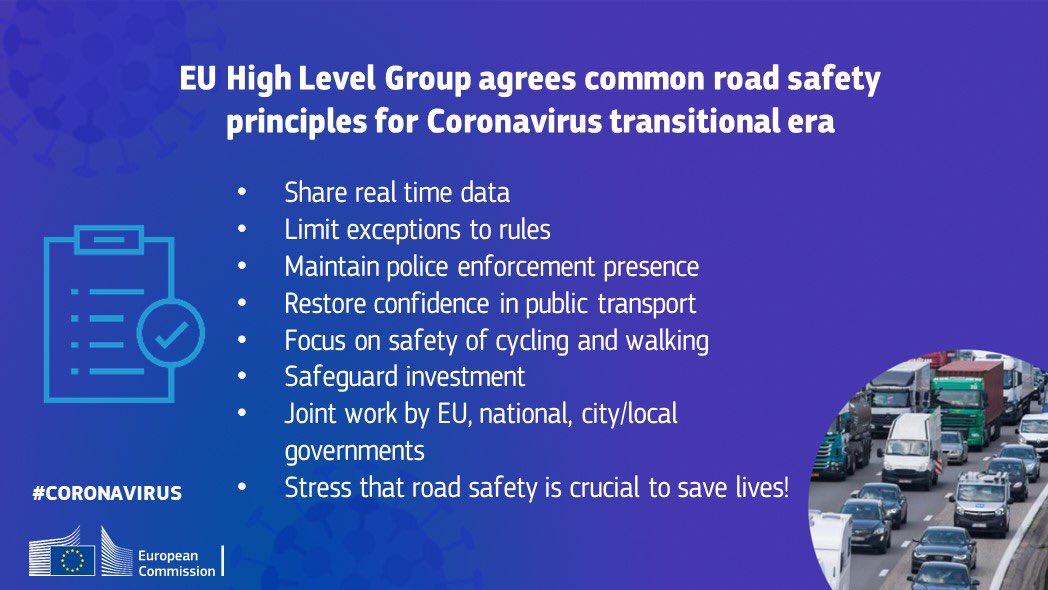RADAR - Road Safety will be vital in post CoronaVirus era in the EU
07-07-2020
The European Commission has published important common principles that the European Union Member Stated agreed upon to keep all road users safe in the post-pandemic era.

The COVID crisis had an unprecedented impact on transport and mobility of European citizens, bringing travel largely to a standstill for several weeks. Even though it was not the moment to stress road safety issues when public attention was quite rightly elsewhere, road casualties have fallen considerably in the last 3 months (March, April, May 2020, though generally not as much as traffic volumes).
There are now clear - and welcome - signs of economic activity increasing again, with a commensurate rise in road mobility. There are also indications that more people are using individual ways of mobility, such as cars – but there is also more walking and cycling – and less use of public transport.
The EU's High-Level Group for Road Safety, therefore, held a discussion on road safety in the COVID era on 16 June and agreed on the following informal conclusions setting out common principles for the forthcoming transitional period:
- Data: it is very important that we obtain timely data and share it with each other, especially on traffic volumes, casualties, and speed during the "lockdown".
- Limit exceptions to road safety rules: during the crisis, some derogation of rules such as truck driver resting period or flexibility on expired driving licenses was necessary, particularly to ensure continued freight supplies.
- Enforcement: because traffic volumes have been lower, and because of the major health crisis, police resources have sometimes been diverted from traffic duties.
- Restore public confidence in public transport: if fewer people use public transport and more people drive, this will tend to increase road safety casualties
- Consolidate safe active mobility: there is evidence of increased cycling and walking during the COVID lockdown, especially in towns, with beneficial effects on public health, air quality, and CO2 emissions. To enable these higher usage levels to be maintained safely and to fight congestion as car traffic increases, temporary ("pop up") bike lanes and wider pedestrian pathways should be made permanent wherever possible; temporary speed limits introduced to protect active road users should be evaluated and, where feasible, maintained. The importance of full respect of traffic rules and good road safety behaviour by ALL road users was stressed in our discussions.
- Safeguard road safety investment: there are tremendous pressures on funding now at all levels, both for COVID alleviation measures and because of the economic crisis more generally. It is important to keep the focus on cost effective actions such as road maintenance / upgrades; pedestrian footpaths or bike lanes (with a particular focus on higher risk intersections); and upgrading the safety as well as the environmental performance of vehicle fleets especially in the case of national scrappage schemes.
- Flexible governance: the COVID-19 crisis has required all of us to work differently and road safety is no different. For example, many of the pressures – and subsequent innovations - have taken place in urban areas, so we need to work flexibly between all levels of governance - urban and local municipalities, regional governments, Member States and the European institutions – to share ideas and best practices for road safety.
- Communication: as we start to move out of the crisis, now is a good time to remind the public about the importance of road safety to save lives and reduce injury – and to lower the pressure on health and other emergency services – and again, we discussed the importance of encouraging good and responsible behaviour by all road users to reduce road risks.
Source: European Commission

